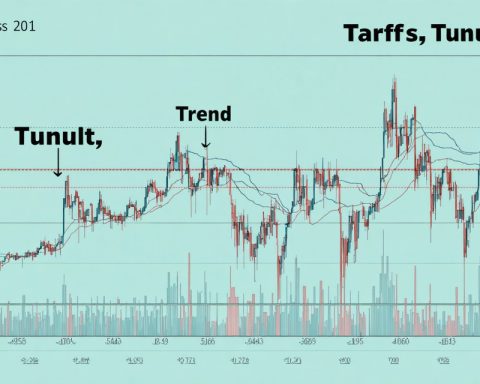The smartphone industry is bracing for a decline in production, as revealed by recent market analysis. As companies navigate the conclusion of new product launches and enter a phase of inventory management by the end of the second quarter of 2024, global production is projected to drop to approximately 286 million units. This marks a decrease of about 3% compared to the previous quarter. The third quarter is expected to exhibit only a marginal improvement, with anticipated production reaching 293 million units, reflecting a year-over-year decline of about 5%.
Leading brands are adjusting their strategies in response to shifting consumer demand. Samsung reported a significant drop in production during the second quarter, primarily due to the end of distribution for its new Galaxy S24. However, the company maintains its leading market position, while Apple, despite an 8% quarterly reduction, has seen production rise by 5% compared to a year earlier, thanks to strategic preparations for promotional events in China.
Chinese brands are also recalibrating their production targets. For example, the smartphone production by companies like Xiaomi and Vivo has seen varying results, with Xiaomi witnessing a notable year-over-year increase. Despite their optimistic market strategies, they are expected to adopt a cautious approach moving forward. Overall, the industry’s recovery in emerging markets like South America and Africa is under threat from economic challenges, prompting brands to closely manage inventory levels and outlooks for the remainder of 2024.
Global Smartphone Production Faces Challenges Amid Economic Slowdown
The smartphone industry is currently grappling with a series of unprecedented challenges that extend beyond mere production figures. The economic slowdown has created a multifaceted environment, prompting manufacturers to rethink their production strategies and market approaches. As global smartphone production is predicted to decrease due to these economic pressures, several pertinent questions arise.
What are the primary factors contributing to the decline in smartphone production?
The decline in smartphone production can be attributed to several interrelated factors. First, the global economic slowdown has led to reduced consumer spending, prompting brands to adjust their production volumes accordingly. Additionally, supply chain disruptions, partly stemming from geopolitical tensions and the lingering effects of the COVID-19 pandemic, have created shortages of essential components. Brands are now facing increased costs associated with procurement and logistics, further impacting their ability to maintain previous production levels.
Which markets are most affected by these trends?
Emerging markets, particularly in regions like South America and Africa, have shown signs of suffering significantly from the economic downturn. Slowing economic growth in these areas has affected consumer purchasing power, leading to decreased demand for new smartphone models. Consequently, manufacturers are closely monitoring these markets and may be forced to adapt their product offerings and pricing strategies to sustain sales.
What advantages do manufacturers have in adapting to current challenges?
Despite the challenges, there are several advantages that manufacturers can leverage. For instance, companies that prioritize innovation, such as incorporating new technologies like 5G and AI capabilities, may appeal to tech-savvy consumers looking for advanced features in a smartphone. Furthermore, established brands often have the resources to invest in marketing and promotional campaigns to boost demand. Brands that successfully transition into budget-conscious markets can also capture a segment of the consumer base looking for value amidst economic uncertainty.
What disadvantages are associated with the current state of production?
On the downside, the declining production levels can lead to missed opportunities in capturing market share, especially for companies trying to establish themselves in competitive environments. Additionally, reduced production rates may lead to higher operational costs per unit, affecting profit margins. The ongoing uncertainty in supply chains may also necessitate increased stockpiling of components, which ties up capital and reduces financial flexibility.
What strategies are companies employing to navigate these challenges?
Smartphone manufacturers are adopting various strategies to mitigate the impact of the economic slowdown. Cost-cutting measures are being implemented, including workforce management and renegotiating supplier contracts to secure better terms. Furthermore, companies are focusing on diversifying their product portfolios by introducing more affordable models to attract budget-conscious consumers. There is also an increasing emphasis on sustainability in manufacturing processes, which not only appeals to environmentally conscious consumers but can also lead to operational efficiencies.
In summary, while the global smartphone production landscape is facing significant challenges amidst an economic slowdown, manufacturers are being compelled to adapt. The success of various brands will depend on their ability to innovate, manage costs, and respond swiftly to changing market demands.
For more insights related to this topic, visit IDC, Gartner, and Counterpoint Research.


















